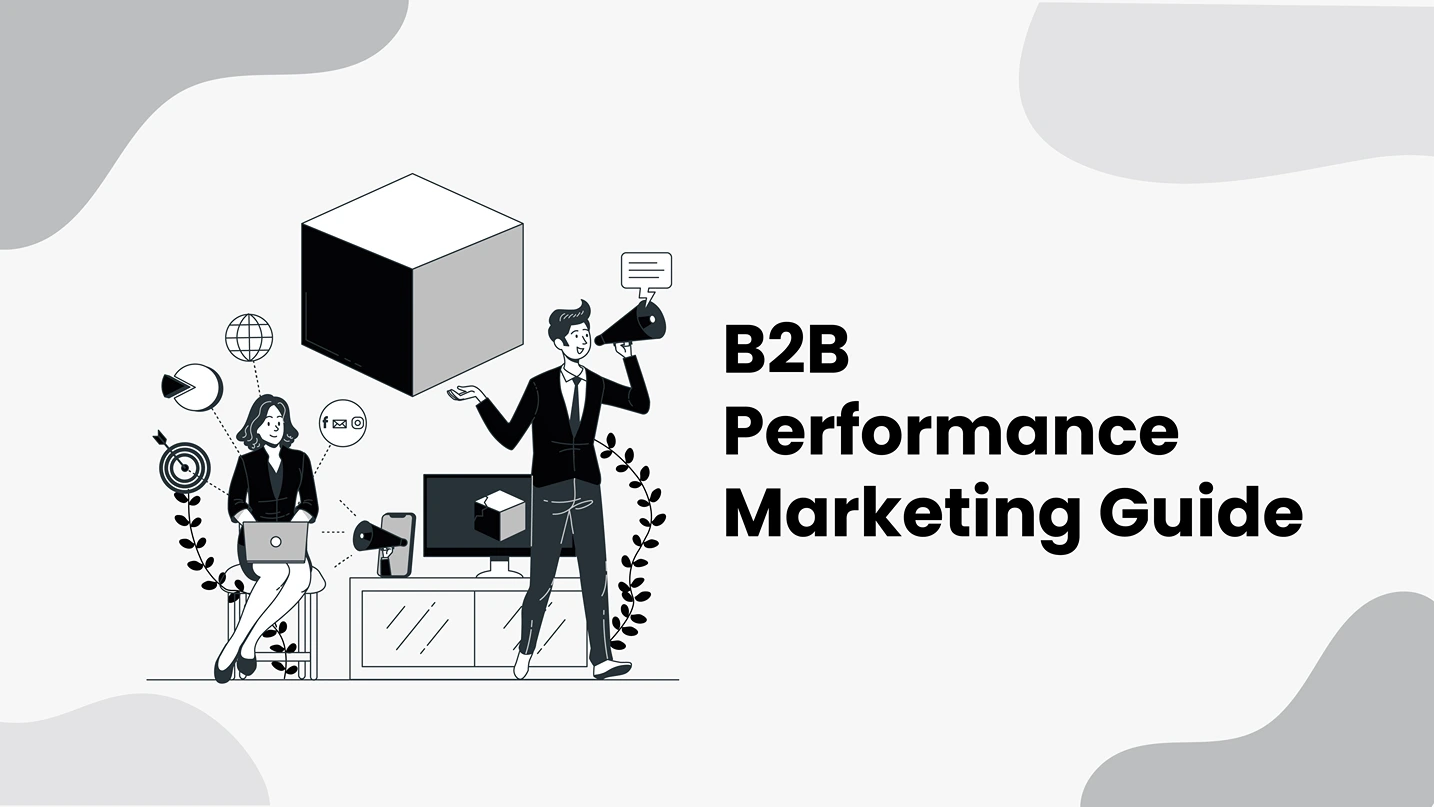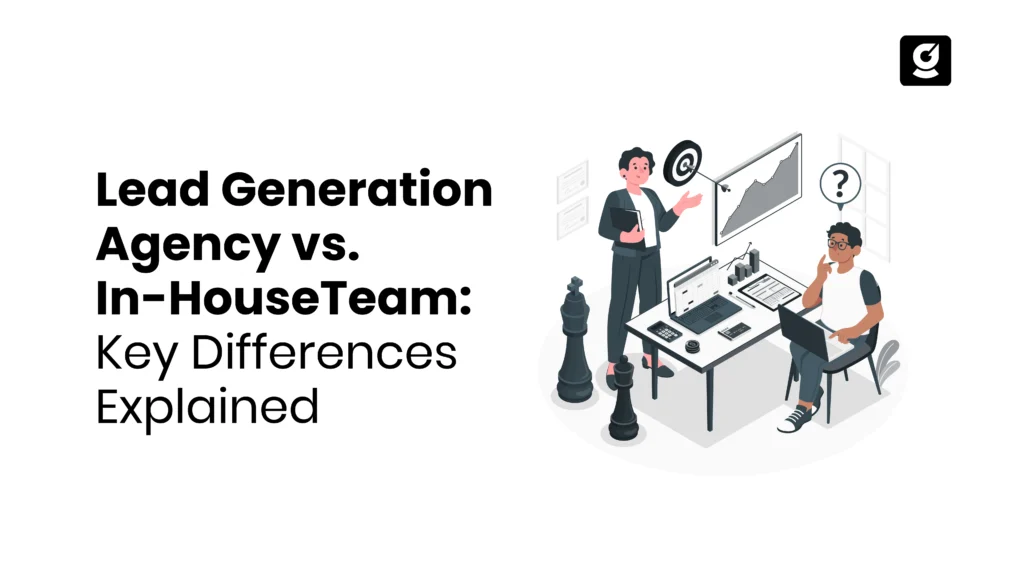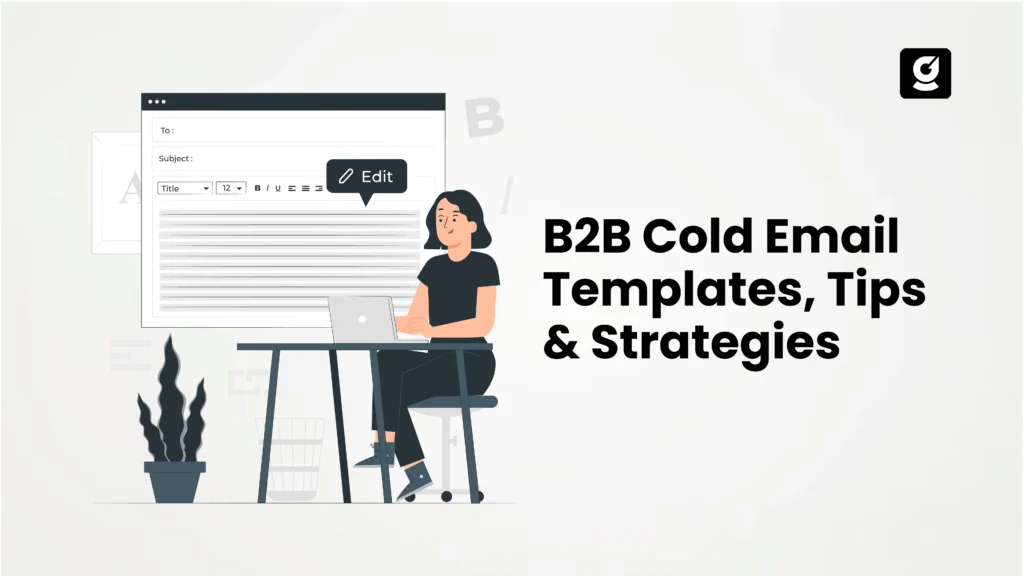Did you realize that 76% of B2B marketers acknowledge a shift in their marketing strategies due to performance marketing’s impact on their growth?
This figure isn’t just a number; it marks a significant transition in B2B SaaS marketing. From traditional methods to strategies that value every click, view, and interaction to success.
Why is this important for you?
The growth of your B2B SaaS business depends on mastering the right strategies during this time of business competition. And then there’s B2B performance marketing, where data isn’t just important; it’s the foundation.
In this guide, we discuss the importance of performance marketing for B2B SaaS companies. The strategies and components of a successful campaign, and offer actionable tips to help you get started in 2024.
What is B2B SaaS Performance Marketing?
B2B SaaS performance marketing is a focused strategy within digital marketing that is uniquely designed for the SaaS sector. It emphasizes the tracking, measurement, and optimization of marketing campaigns against specific KPIs. This approach not only pinpoints their success but also identifies the best-performing channels.
This strategy is different from traditional B2B marketing tactics, which lean on broader metrics like brand visibility or click-through rates. B2B SaaS performance marketing focuses on customer actions, such as signing up for a free trial or subscribing to a service. By monitoring these actions, companies can change their marketing approaches for enhanced efficiency.
The advantages of adopting a B2B SaaS performance marketing strategy include:
- Tailored marketing efforts
- Better outcomes
- Cost efficiency
- Boosted brand recognition
- Adaptable tactics
- Improved customer engagement
Best Performance Marketing Methods for B2B SaaS Companies in 2024
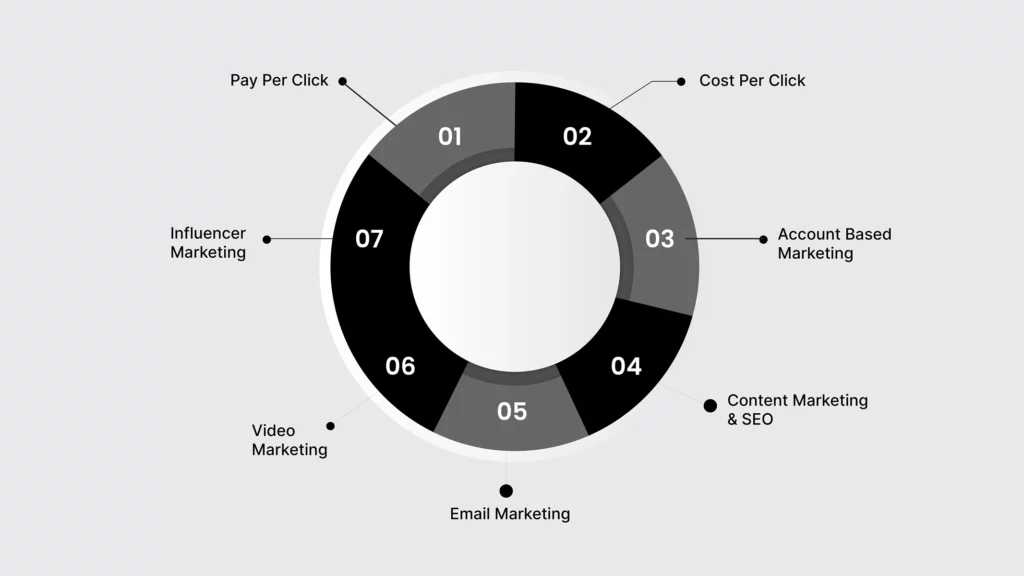
1. Pay Per Click (PPC) Advertising
With PPC, marketers pay a fee each time their ad is clicked. It’s a direct route to gaining higher visibility and traffic from search engines and other platforms. It visits your site rather than attempting to “earn” those visits organically.
You’ll see the ads displayed like this:
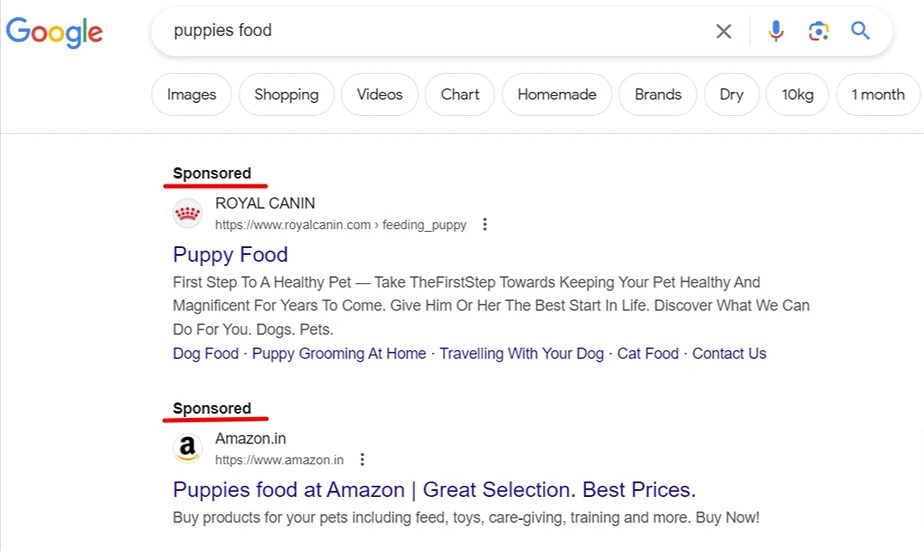
The top pay-per-click platforms include Google Ads, Meta Ads, Microsoft Ads, LinkedIn Ads, and Instagram Ads.
For B2B companies, PPC campaigns can be highly targeted. They mainly focus on keywords that are relevant to their industry, products, or services. This ensures that the traffic driven to their websites is from individuals with a genuine interest in their offerings.
- Keyword Research: Conduct complete keyword research to target terms that your potential B2B clients are searching for.
- Ad Copy: Craft compelling ad copy that directly addresses the target audience.
- Landing Pages: Design landing pages that are optimized for conversion, providing clear, relevant information and a straightforward call to action (CTA).
- Different Bidding Strategies: You have to experiment with different types of bidding strategies to get a good ROI from your ad spend.
2. Cost Per Click (CPC)
Similar to PPC, CPC is a metric that measures the cost for each click on an ad. It’s used across various platforms, including social media and search engines. CPC is mainly used as a bidding system.
If you want to get the most out of your CPC, you have to choose the right keywords, ads, and catchy landing pages. There’s a formula that you can use to calculate the CPC.
Cost per click = total ad cost / total number of clicks
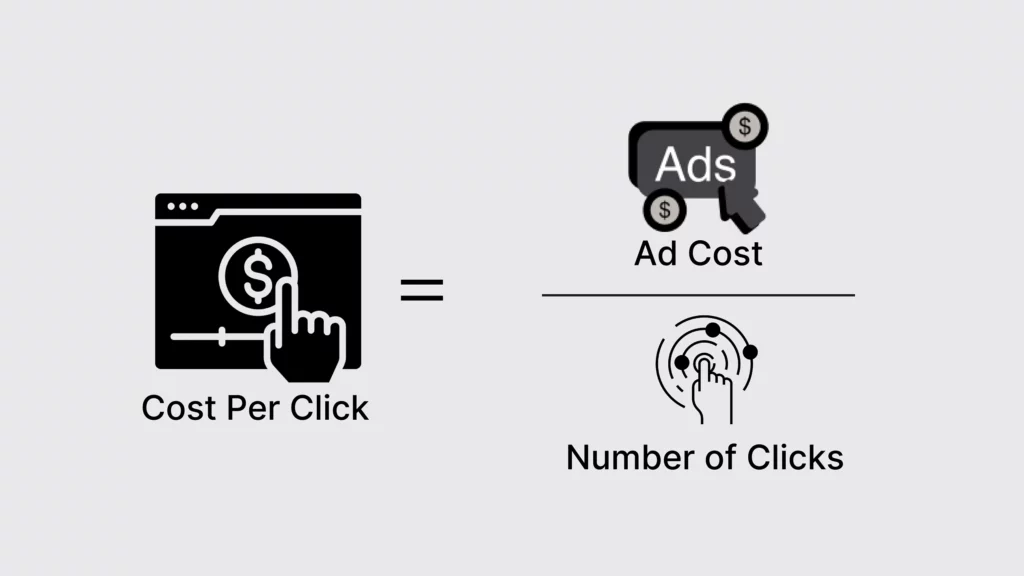
In a B2B context, managing CPC efficiently means optimizing ads. To achieve the highest quality clicks at the lowest cost, thereby maximizing ROI.
- Ad Quality: Improve the quality and relevance of your ads to increase click-through rates (CTR), which can help reduce your CPC.
- Bid Strategy: Experiment with different bid strategies to find the most cost-effective method for your goals.
- Targeting: Targeting to ensure your ads are being shown to your targeted audience, reducing wasted clicks.
3. Account-Based Marketing (ABM)
ABM flips the traditional marketing funnel upside down by identifying key accounts first. And then create highly personalized marketing campaigns targeted at these accounts.
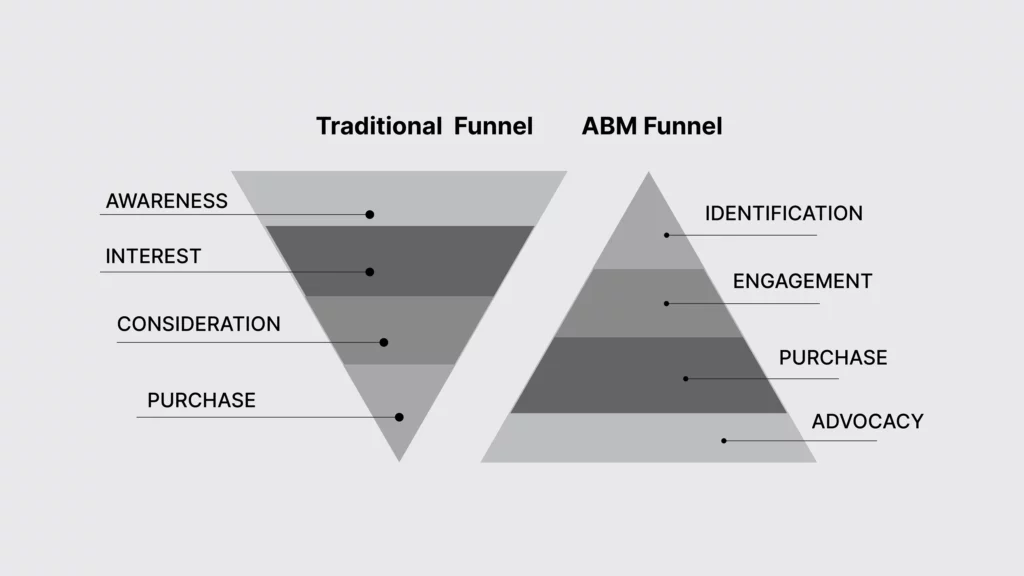
It’s about focusing resources on a set of target accounts within a market. And employ customized campaigns designed to resonate with each account. Given its targeted approach, ABM is particularly significant in B2B marketing.
It makes meaningful connections with a smaller number of high-value clients and can lead to substantial business growth. Maximize your chances of success by hiring an ABM marketing agency to handle your strategy. Their expertise can make all the difference.
4. Content Marketing and SEO
Content marketing and SEO are two sides of the same coin. First, you need to create high-quality, valuable content tailored to the needs of your target audience. B2B marketers can attract, engage, and retain an audience. Also, they should improve their site’s ranking in search engine results pages (SERPs).
This dual approach enhances online visibility and establishes your brand. Like a thought leader in your industry, building trust with potential clients.
- Educational Content: Produce high-quality, informative content. It has to address the questions and challenges of your B2B audience.
- Keyword Optimization: Integrate relevant keywords naturally into your content to improve SEO rankings.
- Content Promotion: Share your valuable content across various channels, including social media, newsletters, and industry forums, to increase its reach.
Suggested Read: Ultimate Guide to SaaS Content Marketing
5. Email Marketing Automation
Email marketing is the most effective automation tool in a B2B marketing company. It allows for direct communication with leads and customers. It also delivers personalized content that can guide them through the buyer’s journey.
Automated email marketing campaigns can nurture leads over time. It also provides them with valuable information and insights at each stage. Focusing on their decision-making process, thereby increasing the likelihood of conversion.
- Segmentation: Segment your email list. Segment it with demographics, behavior, or stage in the sales funnel.
- Automation: Use email automation to send timely, relevant emails to nurture leads effectively.
- Analytics: Monitor open rates, click-through rates, and conversions to optimize your email campaigns continually.
Also Read: Best Email Marketing Agency in 2024
6. Video Marketing
Video marketing is really liked by businesses selling to other companies. It makes it fun and easy to learn about tricky stuff. You can see how things work, learn tips, and hear what others think about a company. This kind of marketing catches people’s eyes and shares your message well.
Putting videos on websites, social media, and emails makes more people want to watch. And that will lead to buying or signing up for your product or service.
- Diverse Video Types: Mix up the videos you make. Use explainer videos, customer stories, product showcases, and peeks behind the scenes.
- Platform Optimization: Make your videos just right for where you’ll post them. Think about how long they should be, what they look like, and what people like to watch there.
- Call to Action: Always add clear instructions in your videos. Like what you want the viewers to do next. It includes visiting your website, signing up to see how something works, or getting in touch with your sales team.
7. Influencer Marketing
While often associated with B2C marketing, influencer marketing has found its place in the B2B world as well. Collaborating with influencers in your industry can lend credibility. And help you reach the correct audience.
These influencers can effectively communicate your brand’s values. It also has benefits, such as driving awareness and lead generation.
- Identify the Right Influencers: When seeking influencers, prioritize those who share your brand values and demonstrate a genuine interest in your industry.
- Co-create Content: Work with influencers to create content that is authentic and valuable to their audience and yours.
- Measure Impact: Track the performance of influencer campaigns to understand their effect on brand awareness, lead generation, and conversions.
Suggested Read: Guide on Influencer Marketing
What Are Some Performance Marketing Tips For Success?
In performance marketing, it’s crucial to focus on several areas that ensure measurable outcomes and high ROI.
i. Optimized Landing Pages
Your website landing page is the foundation of effective performance marketing. It must be finely tuned to convert visitors into customers. Make sure it’s slick, engaging, and, most importantly, persuasive.
You want visitors to think, “Wow, I need this product/service,” and hit that buy button. Present your offer to boost conversions and motivate affiliates to champion your brand.
ii. Continuous A/B Testing
The dynamism of performance marketing demands constant testing. Regularly evaluate your landing pages, ad copy, and promotional offers. It discovers the most effective strategies. Aim to refine your approach based on key performance indicators (KPIs). That significantly impacts your business revenue.
iii. Leverage Social Media Platforms
To effectively engage your target audience, leverage popular social media platforms. You can get leverage like Facebook, Instagram, and Twitter. They are not just for scrolling through during your coffee break.
They are goldmines for connecting with your audience. Design your campaigns to support both new customer acquisition and retargeting efforts. And ensures maximum conversion and efficiency.
iv. Stay With the Latest Trends
Always informed about the latest trends and technological advancements. Being at the forefront of innovation allows you to adapt and get high ROI in your performance campaigns.
Benefits of Performance Marketing in B2B SaaS Companies
Performance marketing has become a cornerstone strategy for B2B SaaS (Software as a Service) companies. It offers many benefits with its growth and customer acquisition goals.
a. Cost-Effectiveness
This is in contrast to conventional marketing approaches that involve costs for potential visibility. Performance marketing enables companies to pay solely for tangible outcomes, including clicks, leads, or sales. This can effectively minimize marketing inefficiencies and guarantee optimal utilization of marketing budgets.
b. Enhanced Targeting
Advanced targeting capabilities enable companies to reach distinct market segments effectively. This helps enhance their marketing communications and boost conversion rates.
c. Long-Term Growth
By targeting customers with higher conversion and retention probabilities. Performance marketing can support sustainable long-term growth.
d. Improved Customer Relationship
By establishing an effective performance marketing strategy. It provides content and solutions; you can cultivate strong relationships with your audience.
Conclusion
Getting good traffic for B2B SaaS requires the right performance marketing strategy. That is what drives traffic to your site, leads to growth, and ensures that you remain on the path to long-term success. Using the techniques we have discussed here, you will be able to position your company as a leader, ready to innovate and streamline like never before.
Also, bringing a performance marketing agency like growth.cx on board could prove to be a significant turning point. A partnership of this type boosts your marketing efforts and provides your business with unique opportunities.

